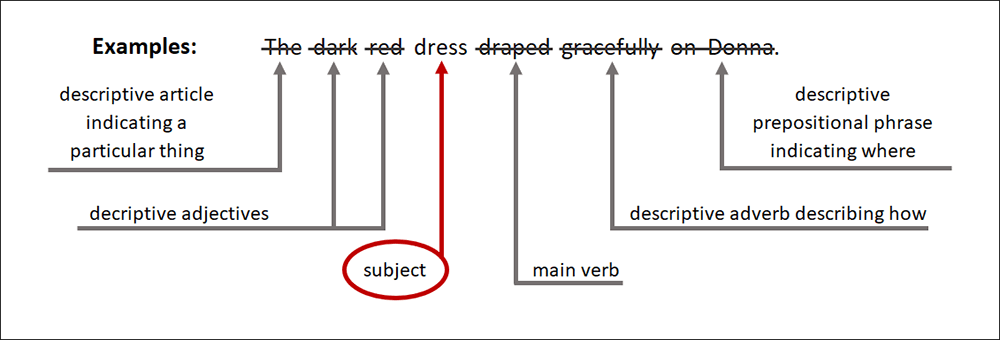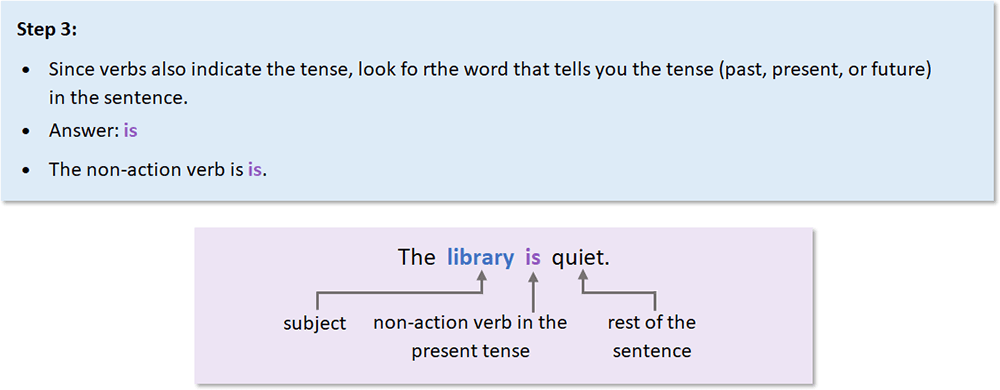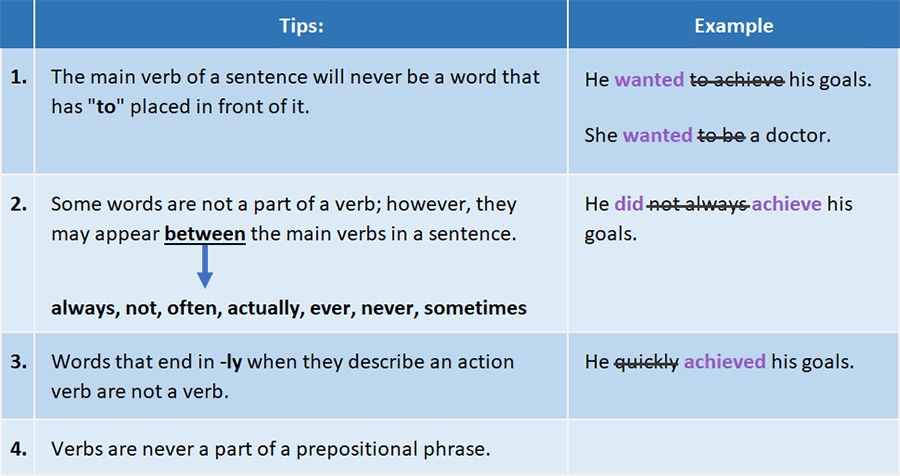20 Sentence Structure: Subjects and Verbs
Subjects and Verbs
Every complete sentence has both a subject and verb and is a complete thought.
The subject is who or what the sentence speaks about. The subject will be a noun or pronoun, a word naming a person, place, or thing.
The verb is what the sentence says about the subject. The verb might express an action or a state of being (a form of the verb ‘to be’).
Remember that the subject and verb will never be found inside a prepositional phrase.
Subjects
To be complete, a sentence must have a subject.
To find the subject, answer the question, “Who or what is the sentence about?”
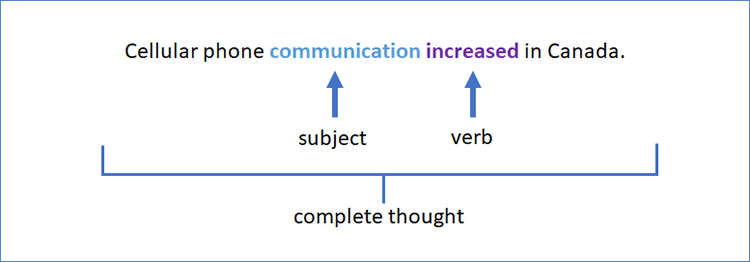
The sentence above is about “communication”; “communication” is the subject of the sentence.
How can you find the simple subject?
Sometimes sentences have more than one noun or pronoun in it. However, these words may not be the subject.
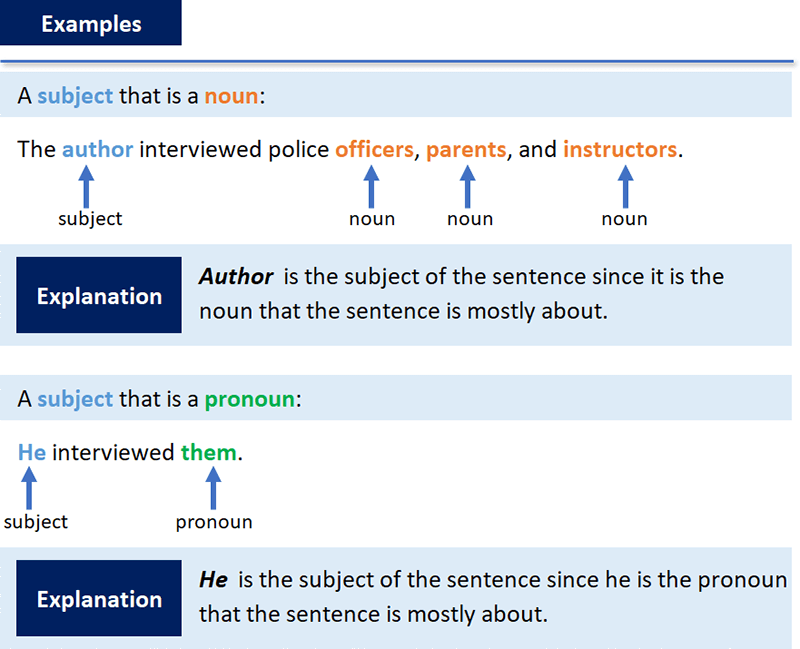
A subject can be singular:
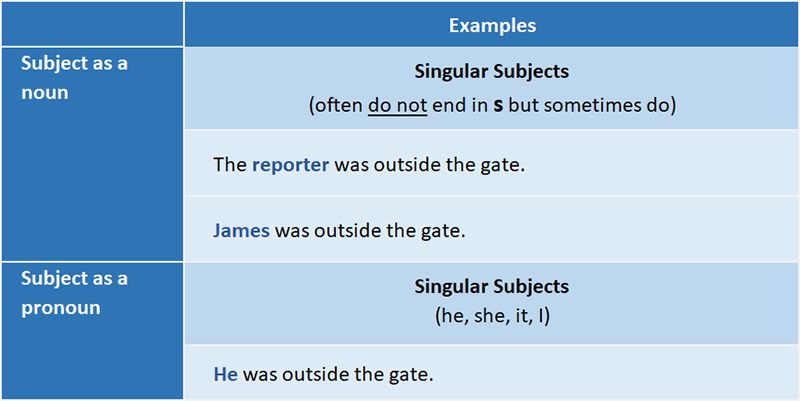
A subject can be plural:
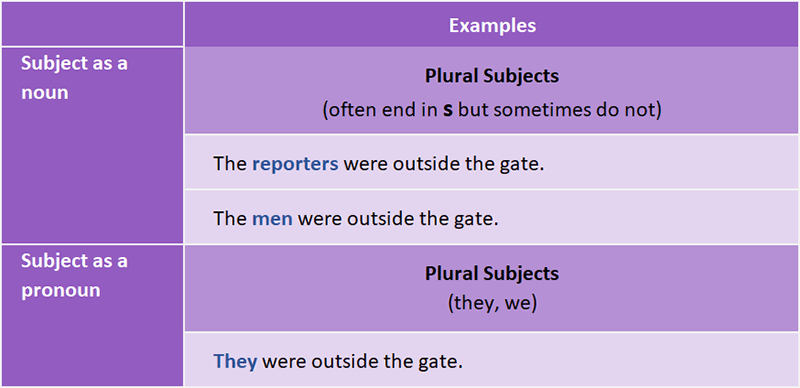
A sentence may also have more than one subject; these sentences are called compound sentences. Compound sentences use the coordinating conjunction and to join two nouns together.

Remember that the subject will never be found within a prepositional phrase.

When you look for the simple subject, look for the core word or words; don’t include descriptive words around the subject.
Tips for finding the subject:
Learning Check
Find the simple subject of the following sentences.
Once you have finished the Learning Check Quiz, read about how to find the main verb in a sentence.
Verbs
To be a complete sentence, a subject must have a verb.
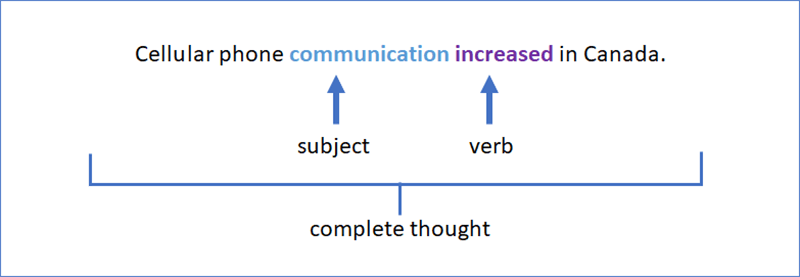
Verbs indicate the tense of a sentence. The tense of the verb tells us the time period when an action occurs, such as in the present, past, or future.

Action verbs
You can immediately recognize action in such words as run, yell, or push. Actions of the mind, such as think, hope, or understand are actions even though one cannot see the action from the outside. Verbs answer the question, “What is the subject doing?”
To find the action verb in a sentence, follow these two steps:
- Find the subject of the sentence.
- Ask the question, “What is the subject doing?”
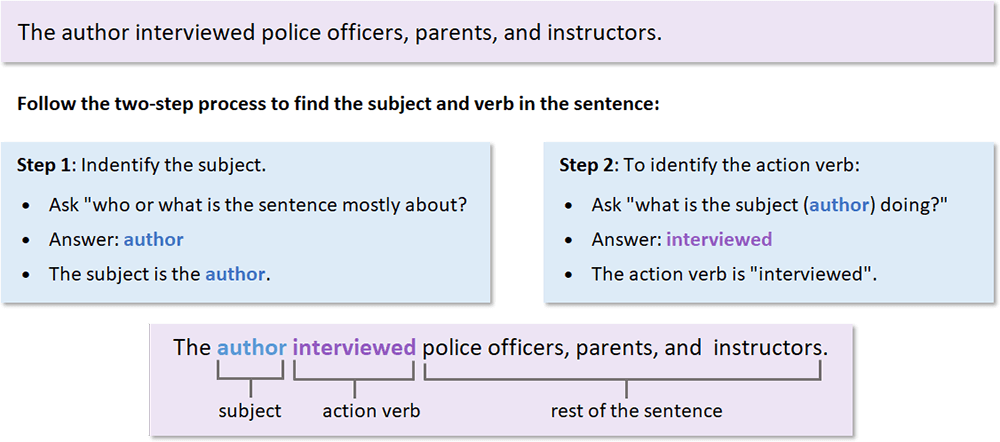
Non-Action verbs
Non-action verbs are verbs that do not show action in a sentence; instead, non-action verbs express a state of being by connecting the subject to a descriptive word or phrase.
If you wanted to express how a person was feeling, you would insert a special linking verb between the subject and the descriptive word.
Examples: Jay is angry. Jay seems angry. Jay looks angry. Jay feels angry
Jay, the subject of the sentence, is not doing anything in these sentences; the sentence says what he is.
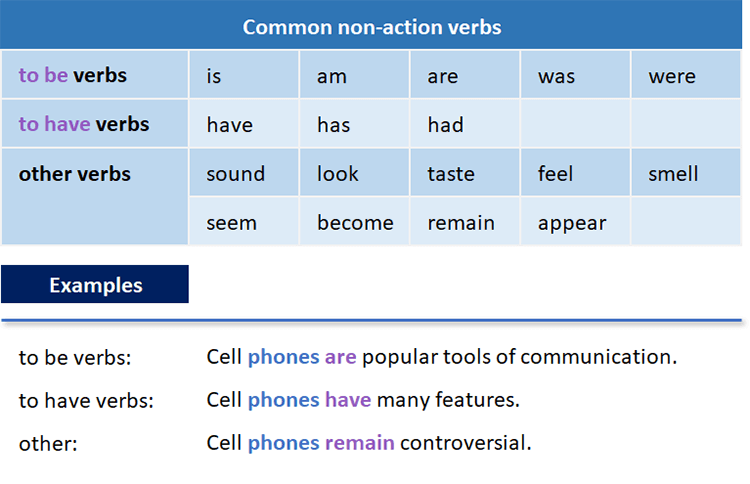
A few verbs can be used as either action or non-action verbs depending on how they are used in a sentence. Some of these verbs are about the five senses: sight, touch, taste, smell, and sound.
| Action Verbs | Non-Action Verbs |
| My mother cooks a lot. | My mother is a good cook. |
| He smiles often. | He seems happy. |
| Marie smelled the roses. | The roses smell nice. |
| Jon felt the cat’s rough tongue. | The tongue felt rough. |
| Eric tasted the soup. | The soup tasted salty. |
| She looked longingly at the cake. | The cake looked delicious. |
To find the non-action verbs, follow these steps:
- Find the subject of the sentence.
- Ask the question “What about the subject?”
If you are unable to find the non-action verb in the sentence by following steps 1 and 2, follow step 3 below:
Verb Phrases
The verb in a sentence can be more than one word. There can be helping verbs in front of the main verb. When this occurs, a verb phrase is created.
When you are identifying verbs in a sentence, be sure to look for the main verb as well as any of these helping verbs in order to find the complete verb.
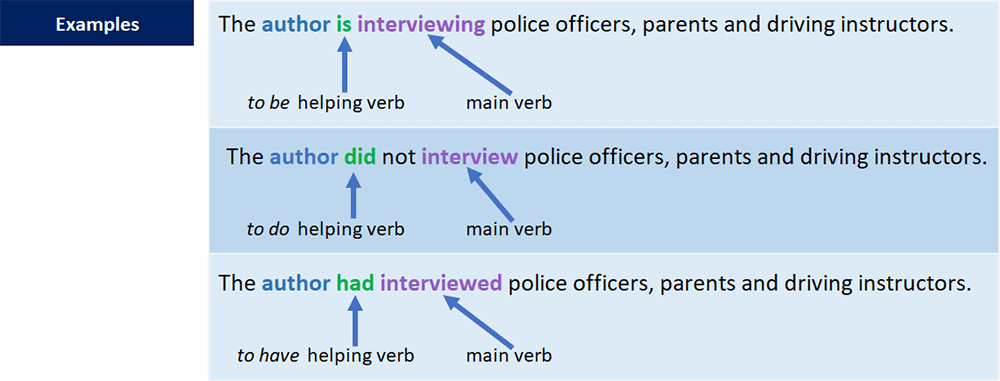
The to be verbs come before words that end in -ing in order to help them become verbs. An -ing word without a helping verb is a noun.
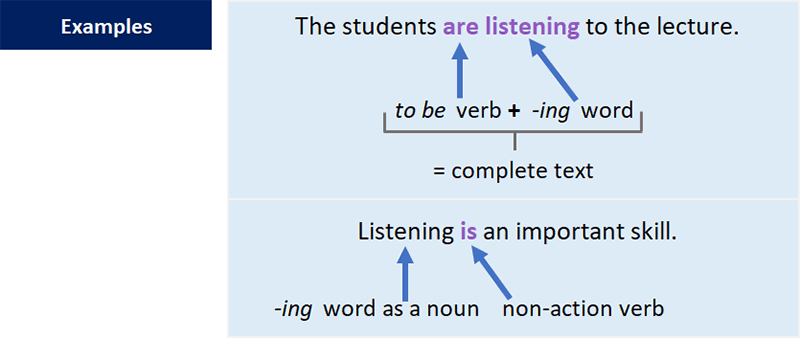
When we want to show a condition in the verb, we add an extra verb because the verb alone cannot show it. The added verb affects the meaning of the verb, as in these examples:
They can laugh. They must laugh. They should laugh. They will laugh.
| meaning | helping verb |
| ability | can |
| possibility or uncertainty | could |
| asking/giving permission or uncertainty | may |
| possibility | might |
| obligation | must |
| criticism, expectation, or suggestions | should |
| intention or insistence | will |
| certainty or implying an annoying habit | would |
| to say that an action happened at an unspecified time before now | has / had /have |
| to make a negative, ask a question, show emphasis | do / did/ does (not) |
An infinitive cannot be a main verb. It is a form of the verb that has to placed in front of it.
Example: The students were going to vote for a class president today. The main verb is were going not to vote.
Tips for identifying verbs:
Finding simple subjects and verbs
When we speak, we often use a very simple word order of subject and then verb:
Sometimes prepositional phrases disrupt the usual sentence order:
Strategy for finding the subject and verb:
- Cross out the prepositional phrase (
Among the contestants) - Cross out other describing words (
an older) - Find the subject (man)
- Find the verb (was)
Sentences that begin with there or here don’t follow the usual sentence order:
Strategy for finding the subject and verb:
- Cross out there/here
- Cross out the prepositional phrase (
in the library) - Cross out other describing words (
many good) - Find the subject (books)
- Find the verb (are)
Questions don’t follow the usual sentence order:
Strategy for finding the subject and verb:
- Turn the question into a statement: You do like pizza.
- Find the main verb (like)
- Find the question helping verb (do)
- Find the subject (you)
Learning Check
Find the main verb phrase in the following sentences.
Watch this video to review subjects and verbs:[1]
Additional Resources
To learn more about subjects, verbs, and prepositions
- Read the first part of Chapter 2.1 (Sentence Writing) in Writing for Success [2].
- Shannon, D. (2021, April 8). Subjects and verbs [Video]. YouTube. https://youtu.be/5r00HCnmFYs ↵
- Writing for Success is adapted from a work produced and distributed under a Creative Commons license (CC BY-NC-SA) in 2011 by a publisher who has requested that they and the original author not receive attribution. This adapted edition is produced by the University of Minnesota Libraries Publishing through the eLearning Support Initiative. ↵

